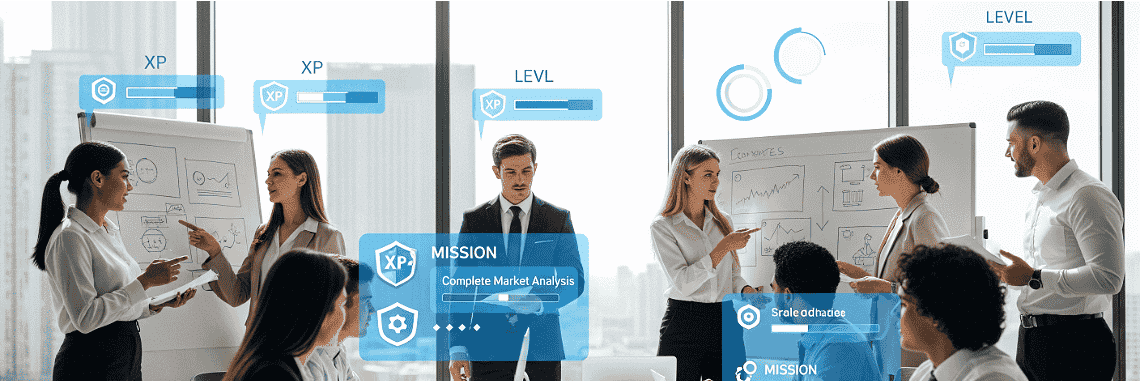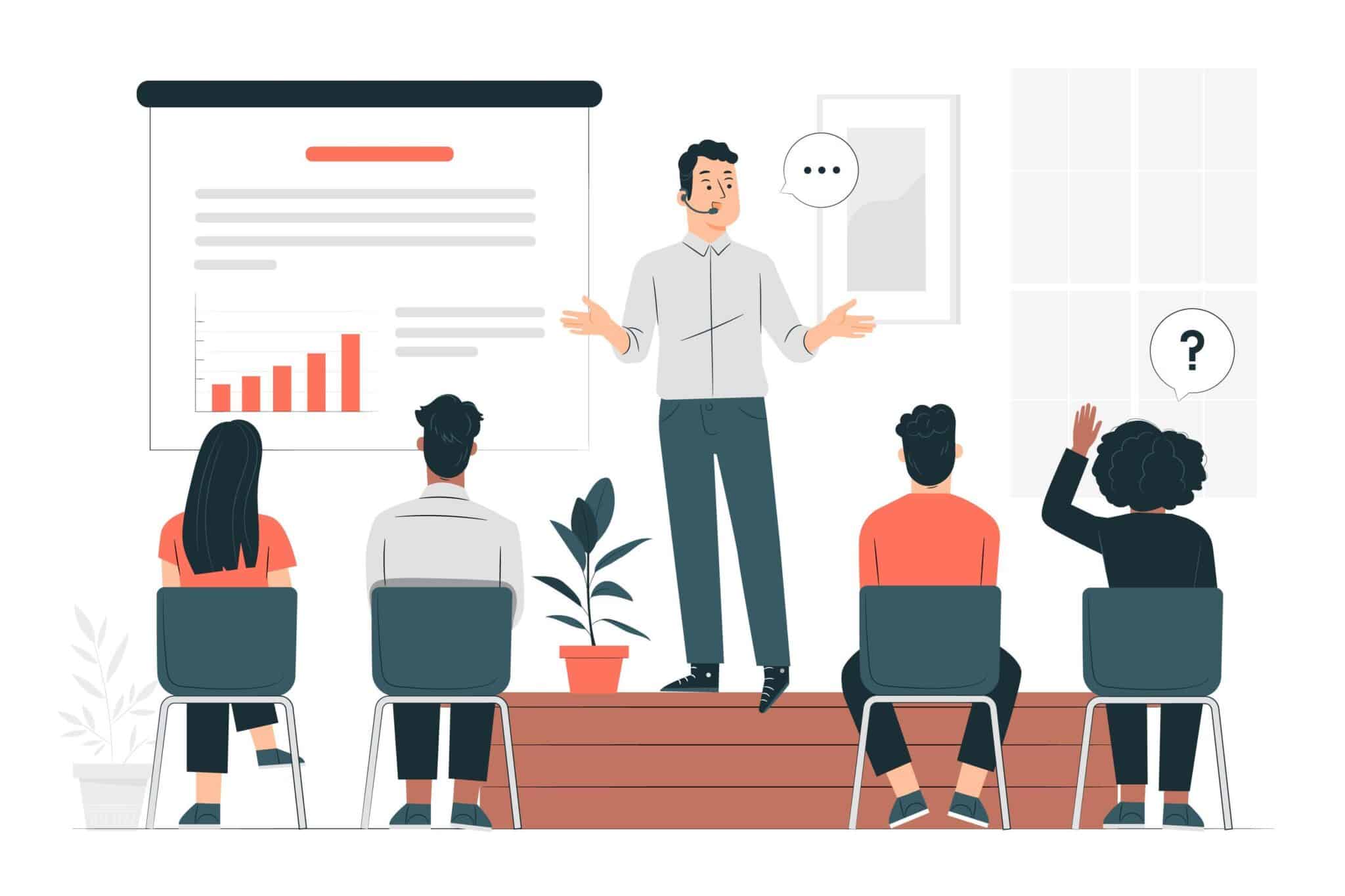Let’s be honest with ourselves, most of the training sessions can be a bit… well, boring. Click, read, pass on, and repeat. But what if learning could feel more like a game you actually want to play?
That’s where digital gamified experiences come in. They’re not just about points and badges, they’re designed to get you thinking, reflecting, and collaborating with your team in ways that actually stick. And the best part? You might not even realize you’re ‘learning’ while you’re at it.
Learning and Play: The Science behind it
Table of Contents
The notion of learning through play is hardly new to us. According to research by Dr. Adele Diamond at the University of British Columbia highlights that when learners are actively engaged in a fun atmosphere, retention increases, creativity flourishes, and their ability to apply information in real-world scenarios skyrockets. Gamified learning experiences, by nature, provide:
1. Structure: Gamified experiences come up with clear norms and objectives that provide a safe space for experimentation.
2. Engagement: This usually gets unnoticed but the reward based mechanism keeps the participants engaged.
3. Reflection: And the well-designed challenges and scenarios feature moments that prompt players to consider their actions and choices.
While play-based learning enhances individual engagement, team gamification takes it a step further by translating shared experiences into opportunities for collaboration as well as confidence development.
But what does this look like in practice? Let’s look at a real-world example.
Why Does This Matters to L&D Professionals?
When it comes to working in a team, you would probably agree with me that it may be challenging because of different ways of communicating, different personalities, and different priorities that can get in the way of smooth teamwork. Digital gamified challenges that encourage group partic ipation can break down barriers and build trust by:
- Fostering Communication: Team based games that require players to exchange information or emphasize the necessity of clear and effective communication.
- Promoting Empathy: When teams work together to solve problems, they learn more about each other’s skills, flaws, and points of view.
- Driving Accountability: Collaborative gamification often assigns roles or tasks, teaching participants to own their contributions while working toward a shared goal.
Reflective Games: Turning Actions Into Insights
It is important to note that reflection is an integral step within effective and meaningful learning processes. As far as participants thinking for themselves goes, a reflective gamification experience encourages the players to stop and think about the reasoning behind certain actions that they did in the course of gameplay.
In some instances, a digital reflective game might challenge players to resolve ethical challenges or work through complicated stakeholder dynamics. Then, a facilitated discussion afterwards could target the unpacking of the decisions made and the implications those choices could have in a workplace.
As far as participants thinking for themselves goes, a reflective gamification experience encourages players to pause mid-challenge and think about why they acted the way they did during gameplay. In our experience, this reflection becomes most powerful when designed into the journey, not treated as an afterthought.
For example, in a two-hour online Gamified Leadership Development Program named “Why Should Anyone Be Led By You?”, participants took part in a set of Olympic-themed digital challenges that examined the Five Practices of Exemplary Leadership. Each round of the game contained case studies of progressively higher order. Teams would move to separate breakout rooms to discuss and debate their decisions before advancing to the subsequent round.
Competition was not the primary focus, however.
It was the reflection that transpired afterward.
Players began to recognize their natural inclinations to jump into solution-mode and the patterns of stronger personalities dominating the discussions and quieter voices getting drowned out, as in many actual work environments. The facilitator-guided reflection provided players the opportunity to link their choices to workplace leadership behaviours they might want to develop or change.
This reflective layer broadened comprehension beyond the gameplay, it gave participants insight into their leadership style, group behaviour patterns, and how intentional choices shape team outcomes in real life.
Such an added reflective layer broadens the comprehension and the learning that occurs.
- Scenario-Based Learning: The players are put in digitally simulated scenarios where there are real-life in-game instances for the players’ decision-making. These are usually timed or have some other element of real-life pressure such as a lack of information or conflicting priorities. The players experience ‘real-life’ pressure decision making where the players have to choose as they would in a real-life scenario. Afterwards, the players are asked to explain their decisions, and this is where the real learning is. The combination of this simulated pressure with reflective questioning allows players to notice and identify patterns in their decision making to a greater extent to which they would have been able to otherwise.
- Feedback Loops: The best created gamified challenges integrate formal and informal feedback loops. These are automated feedback systems such as scores, badges, and locked levels, peer feedback from breakout room discussions, or feedback from a facilitator during a wrap-up debrief. Players need to see other teams and the decisions they made, the alternate outcomes to the decisions they made, and be able to relate this to the reality of the workplace. Here, players realize how decisions made in a game are often the same decisions that need to be made in real-life. This feedback facilitates learning and reduces the gap between experience and insight.
- Personal Growth: Reflective gamification facilitates the awareness of self, thereby assisting in the focusing and achieving of personal and professional goals. By tracking their emotional touchpoints (stress, competition, indecision), players self assess from the level of control they assume, withdrawing, or sacrificing comfort to make compromises. With time, players learn to read valuable self awareness signals (strengths, blind spots, and growth opportunities). The game provides data and a roadmap to assess and steer self awareness in the desired direction. The insights can be used to track progress and grounded goal setting in self awareness, at a professional and personal level.
The Future of Gamification in Learning
With the hybrid work environment, the boundaries between physical and virtual spaces are getting blurred, and this has made gamification experiences increasingly adaptive and immersive. Of course, AI and data analytics can be incorporated to personalize learning journeys, track behavioral trends and enhance engagement at both individual or team level.
In a world where learning is often passive and one-size-fits-all, gamified and social learning experiences bring about a good divergence. They are not only aids for instructions – they are avenues for socialization, compassion and creativity.
Next time round you are about to think in terms of a training session or a group bonding initiative, think about adding a few digital learning challenges or interactive quests. You might just be surprised at the answers that were evading you – probably one game at a time.








